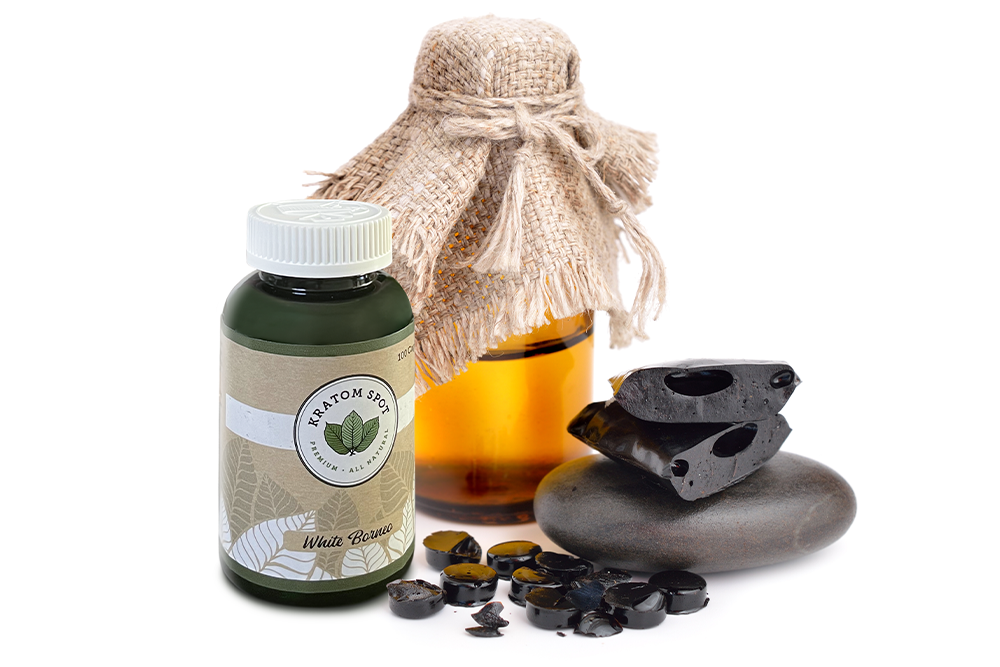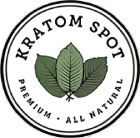
There are many natural supplements out there, each with individual benefits to our health and wellness. Take Mitragyna speciosa, for example, the tree that gives us kratom! Long revered as a form of traditional medicine, kratom products continue to inspire wellness trends throughout Southeast Asia and the West today.
However, not even kratom matches the uniqueness and relative obscurity of another health-inducing compound: Shilajit (pronounced “she-la-jzeet”). Similar to kratom, shilajit supplements are natural. But unlike kratom, purified shilajit derives from minerals, not plants. You see shilajit forms as a tar inside high mountain rocks. Plant matter gets trapped inside rocks for thousands of years, decomposing into a thick, viscous, brown-colored resin.
Sounds strange, right? But even the fabled Monks of the Himalayas understand the health benefits of shilajit, harvesting the substance for ritual and everyday medicine. The Monks aren’t alone, either. Shilajit forms naturally in remote areas of Bhutan, China, India, Iran, Mongolia, Nepal, Pakistan, Russia, and even Peru (where it is known as Andean Shilajit). In these regions, purified shilajit supplements are used for a variety of health-related purposes. Furthermore, if we examine shilajit vs. kratom side-by-side, we’ll observe a variety of similarities and differences.
But first…
Everything You Need to Know About Shilajit
Before we can compare shilajit vs. kratom, we must first get to know shilajit supplements a little better. I mean, we’re a kratom company. Of course we know more about kratom!
We have already learned that shilajit is…
- Formed when plant matter is trapped inside high mountain rocks, decomposing over thousands of years
- Naturally found in tar or resin form, but technically comes from minerals
- Found in regions of the Himalayan, Karakoram, and Andes Mountains
And while this information gives us an understanding of purified shilajit, it doesn’t paint the complete picture. For starters, what are the so-called benefits of shilajit that make this mineral-tar so enticing? Proponents claim that shilajit supplements can:
- Boost energy, activity, and motivation
- Boost cognitive health (by preventing accumulation of the tau protein)
- Raise testosterone levels
- Reduce inflammation
- Improve iron deficiency
- Improve male infertility
- Protect against free radicals and cell damage
- Reduce altitude sickness
Remember how we called purified shilajit a “resin” or “tar” or even a “tarry resin”? In actuality, shilajit is chemically composed of humus, defined as “the organic component of soil, formed by the decomposition of leaves and other plant materials.” Between 60-80% of shilajit is made of fulvic acid, an antioxidant and natural component of humus. Like shilajit, fulvic acid can be used to treat altitude sickness, raise testosterone levels, and boost cell functionality.
How is Shilajit Taken?
Because it comes in tar form, the easiest way to ingest purified shilajit is to take small spoonfuls and dissolve them in a glass of water. You can also find shilajit supplements in both powder and capsule form. However, it is recommended that you only purchase purified shilajit in tar or resin form. Because of the high price tag, fake shilajit is often sold as powders or capsules.
Differences & Similarities: Purified Shilajit vs. Kratom
SIMILARITIES Between Kratom and Shilajit
Now that we know more about odd yet lucrative shilajit supplements, how do they compare to kratom products like kratom powder, capsules, or extracts?
Both kratom and shilajit share some similarities. Most notably: users describe the taste of both supplements as generally unpleasant. Apparently, shilajit not only looks like tar—it tastes like it, too! But like kratom, the taste isn’t bad enough to halt use altogether. Furthermore, kratom users often come up with creative solutions to balance the bitter taste of kratom, a practice some shilajit users recommend.
Shilajit’s energy-inducing effects are also the most celebrated. If you didn’t already know, white vein kratom—one of the most popular varieties—is famed for its naturally energy-boosting properties. When looking at shilajit vs. kratom, it’s important to note that both possess energizing properties.
Finally, both kratom and shilajit are available in capsule and powder form. Unfortunately, as we mentioned above, shilajit capsules and shilajit powder are often fake. Instead, you should purchase purified shilajit, which will always come in tar or resin form. Shilajit has a high price tag, opening the door for fake products on the market. Do your research and only buy from trusted vendors!
DIFFERENCES Between Kratom and Shilajit
Other than being natural, having a generally unpleasant taste, and inducing energizing benefits (among others), the similarities among shilajit and kratom stop there. So what about the other half of our compare-contrast formula?
Well, the differences are obvious. Shilajit comes from minerals, while kratom comes from tree leaves. Purified shilajit forms over thousands of years, while Mitragyna trees take about two years to reach peak maturity. Finally, shilajit supplements derive from high mountain ranges while kratom thrives in dense, tropical rainforests.
Should You Use Shilajit: Our Conclusions
When it comes to shilajit vs. kratom, you must first understand why you are using natural supplements to begin with. There is so much out there in the natural world. Furthermore, the benefits of shilajit and kratom can be life-changing. However, these products are not for everyone.
In our experience, kratom is an ideal daily wellness boost! Depending on which kratom strain you choose, you can opt for relaxing benefits (red vein kratom), energizing benefits (white vein kratom), or somewhere in between (green vein kratom). When purchasing kratom, you also have more product varieties to choose from. This includes capsules, powders, shots, loose leaf kratom, and more.
We have much less experience with shilajit. However, from our research, shilajit supplements seem like a legitimate way to add an energizing boost of antioxidants to your daily wellness regimen. Similar to kratom, more research is needed to fully understand purified shilajit and all its potential uses. Furthermore, potential shilajit users should opt for shilajit tar or resin, avoiding potential fakes like shilajit powders or capsules.

